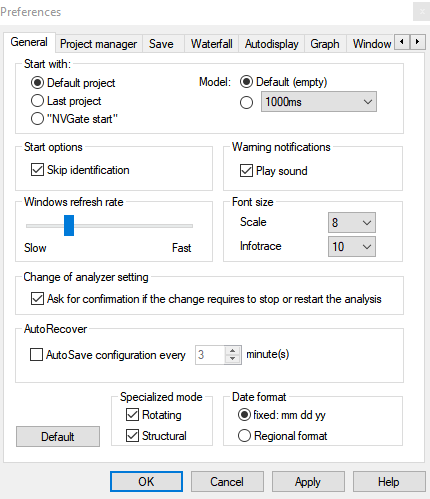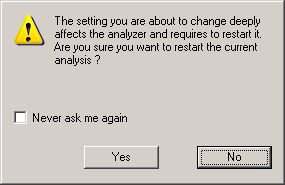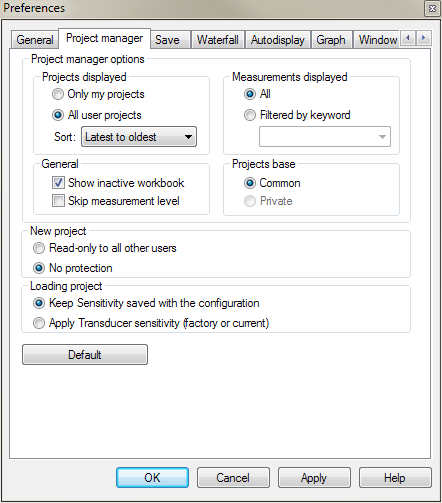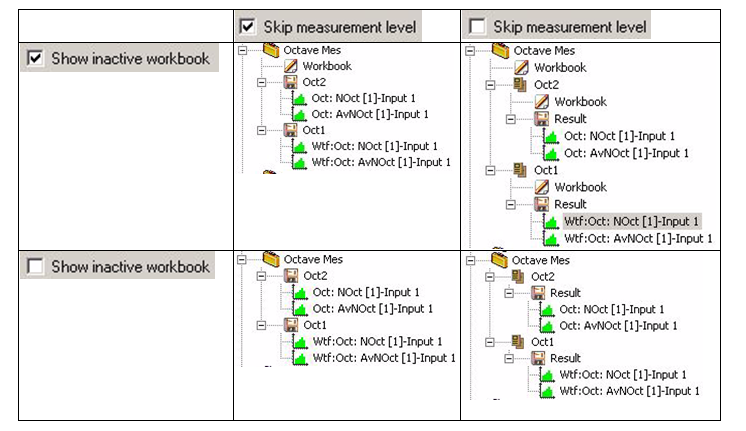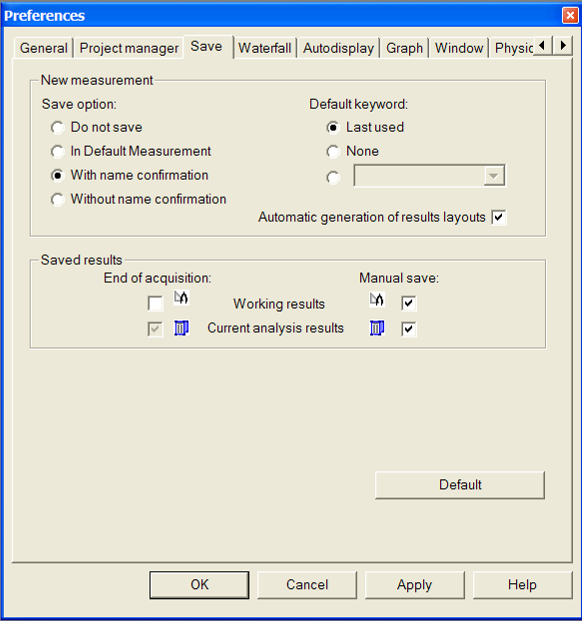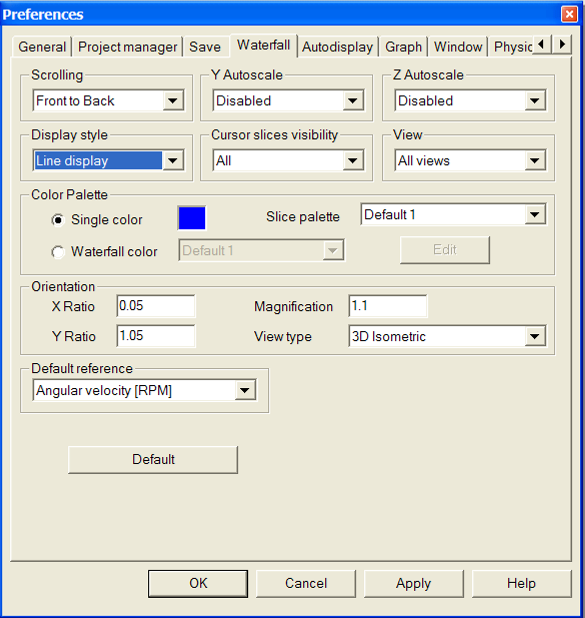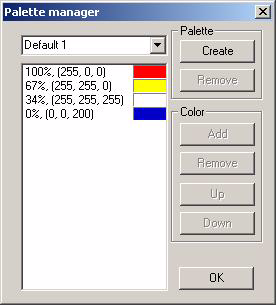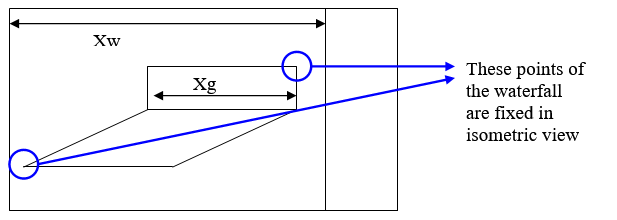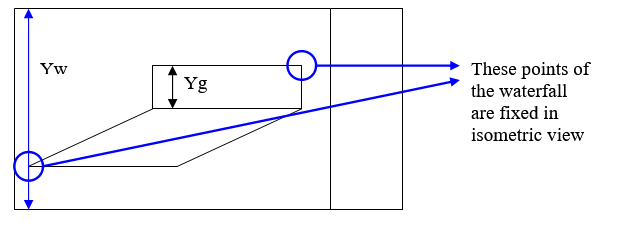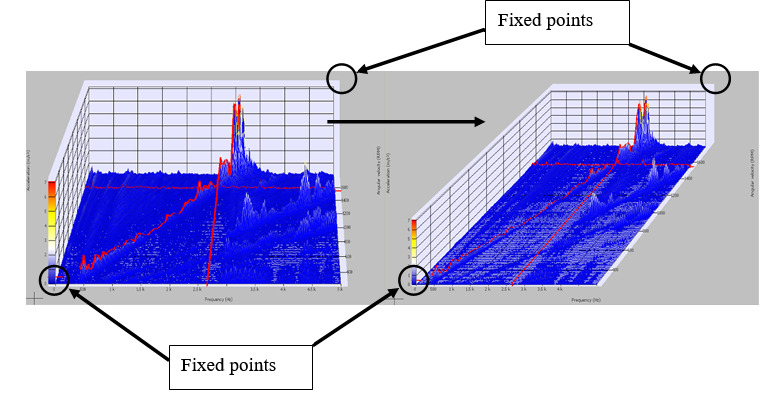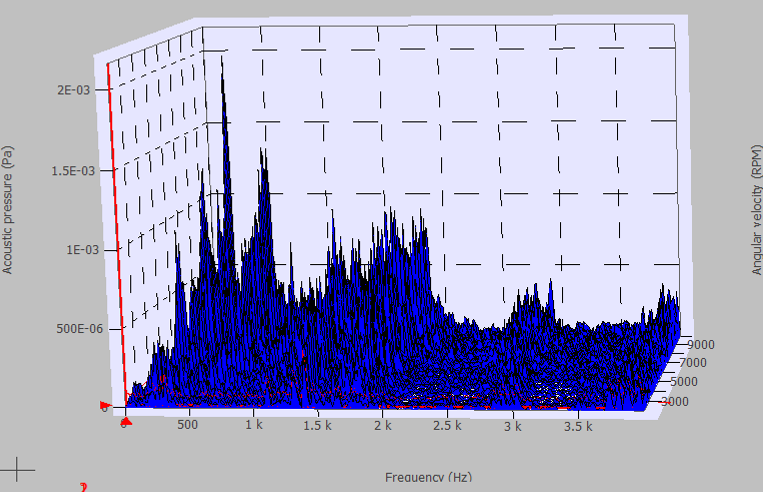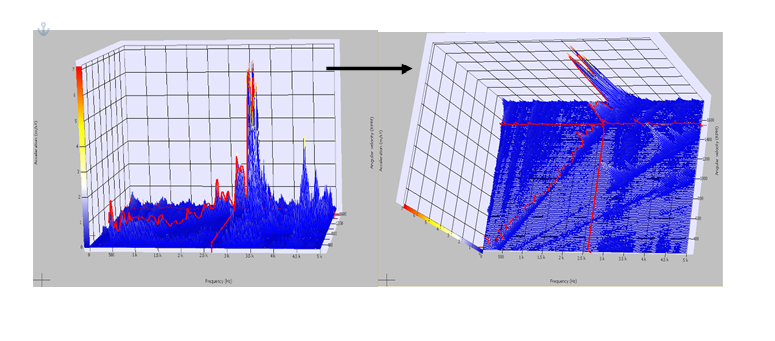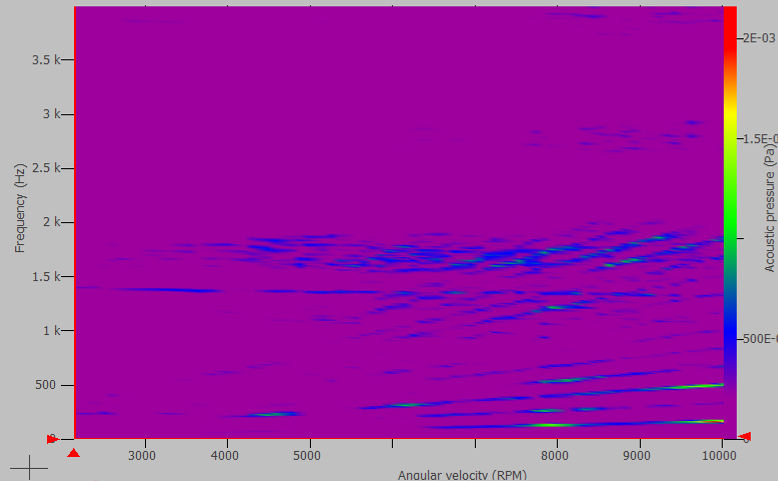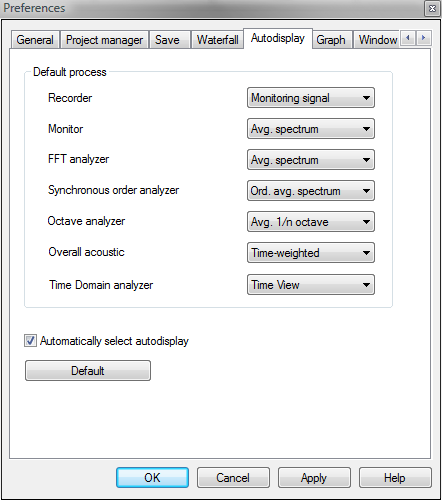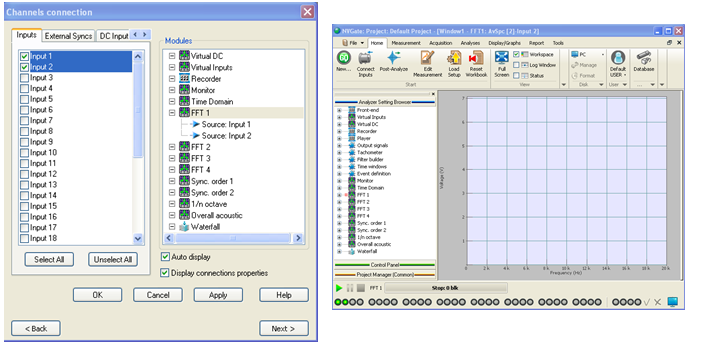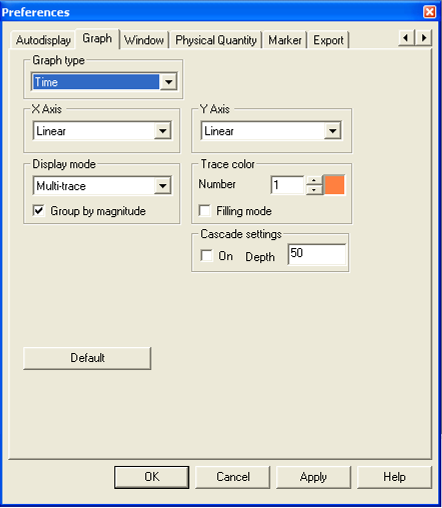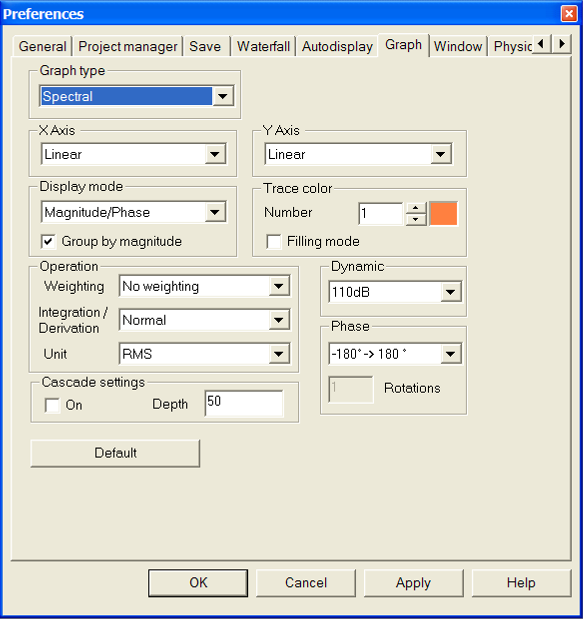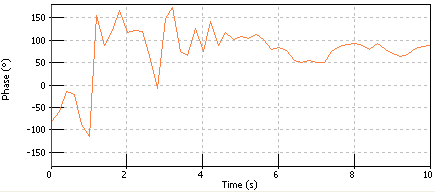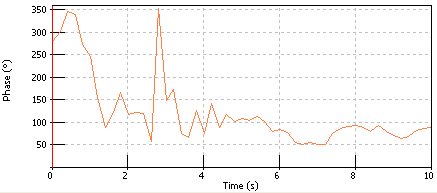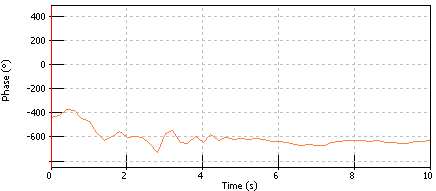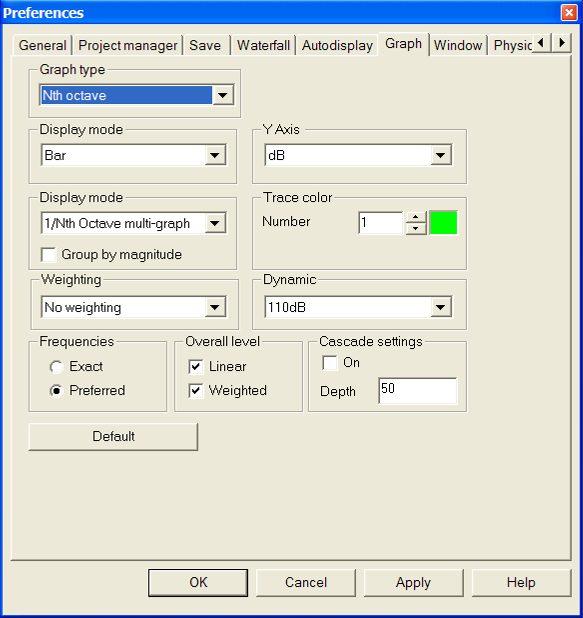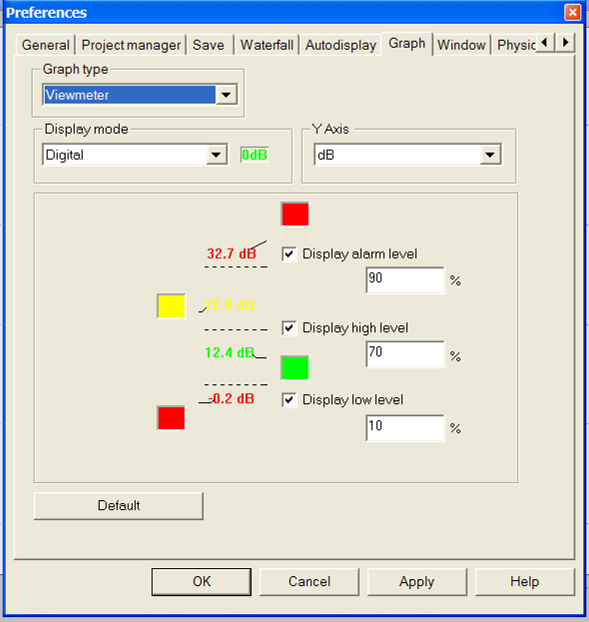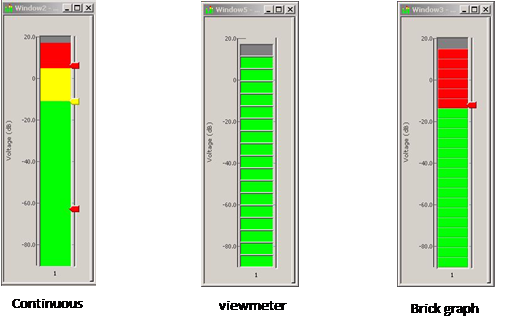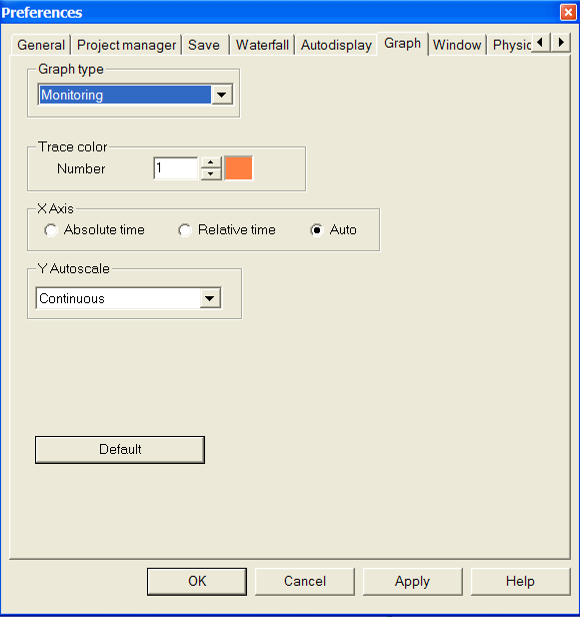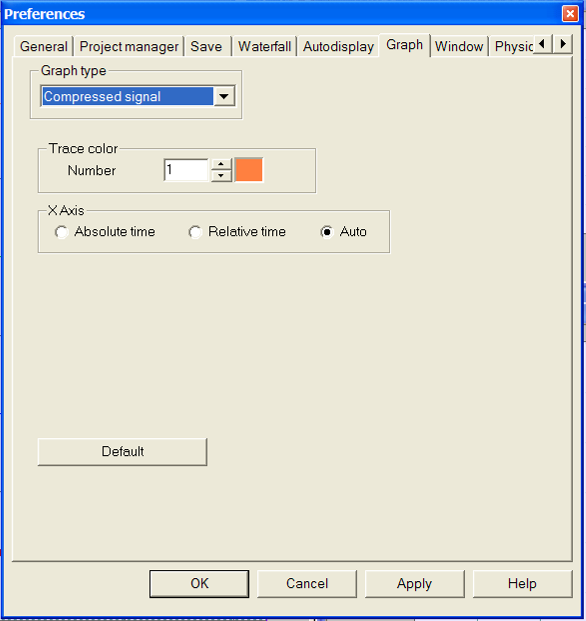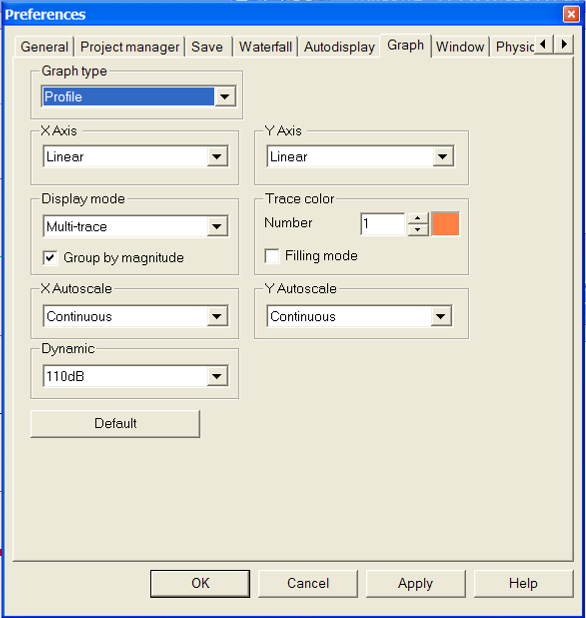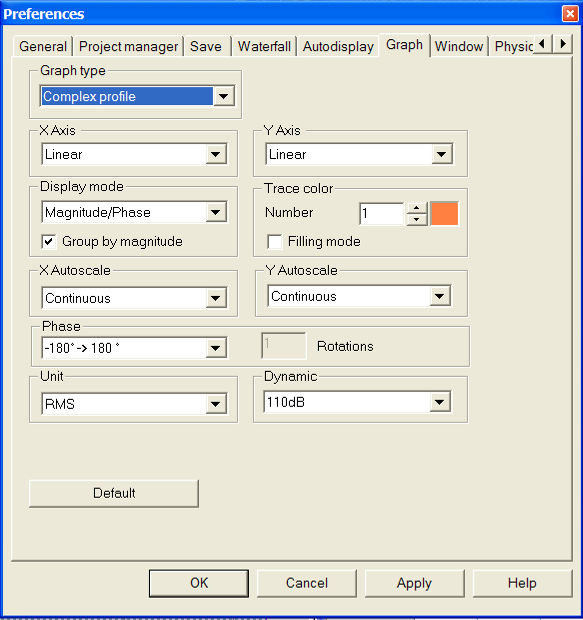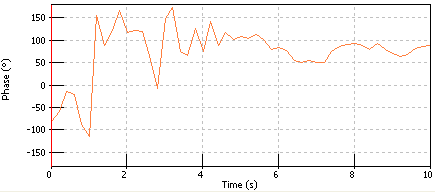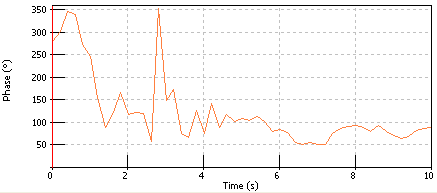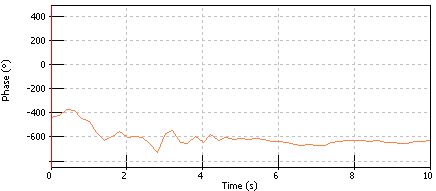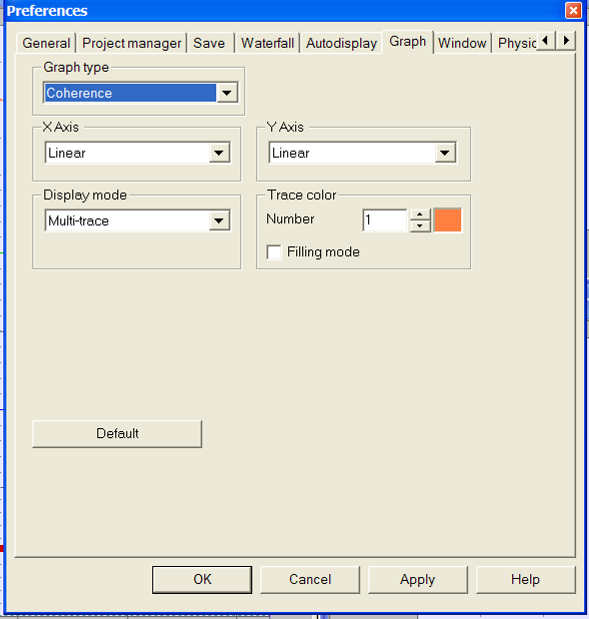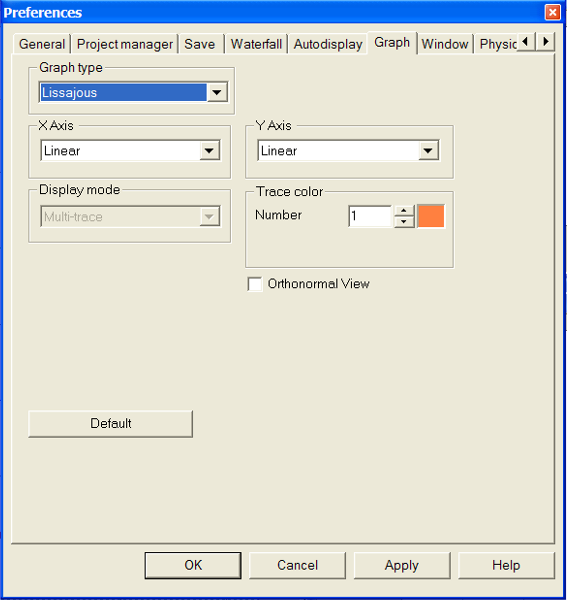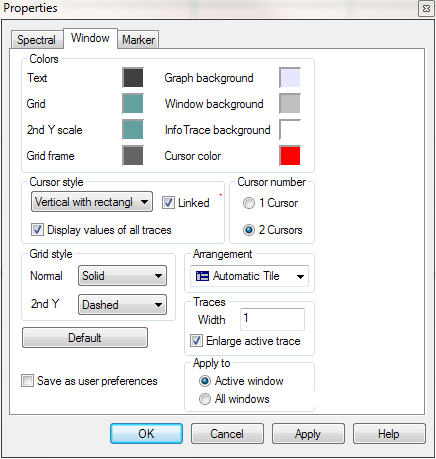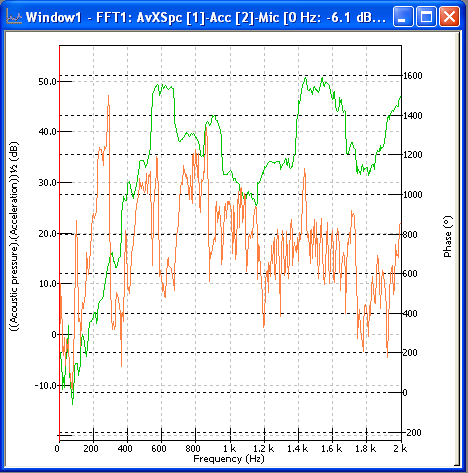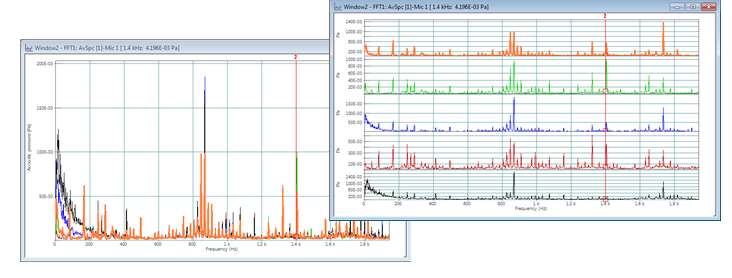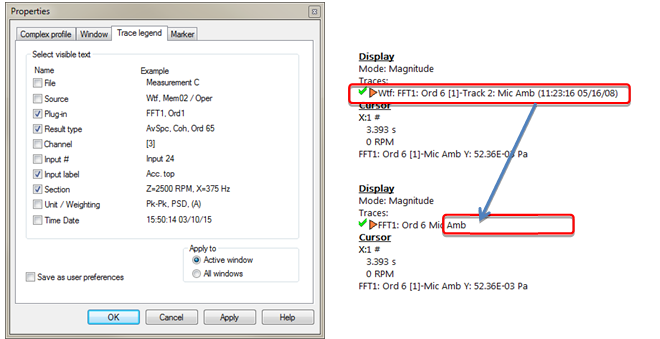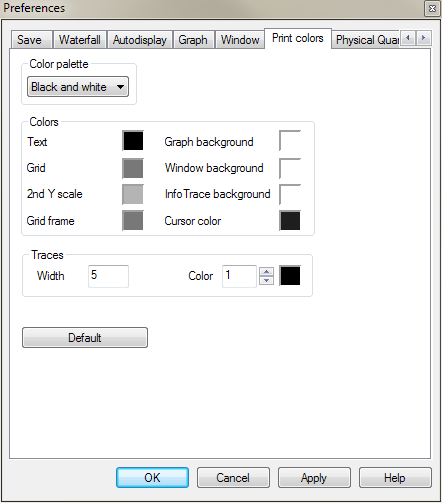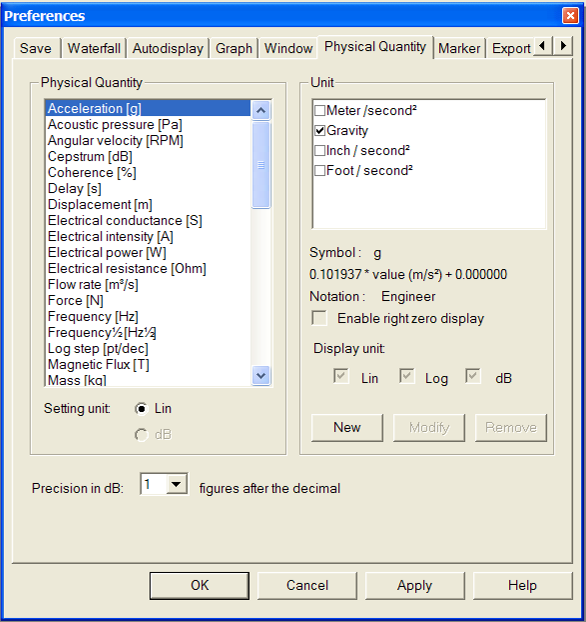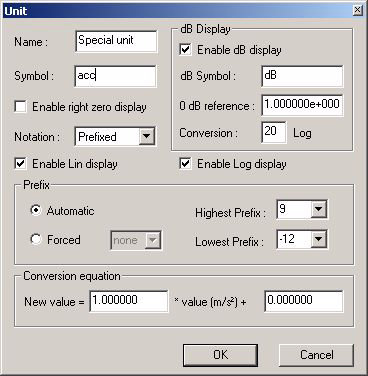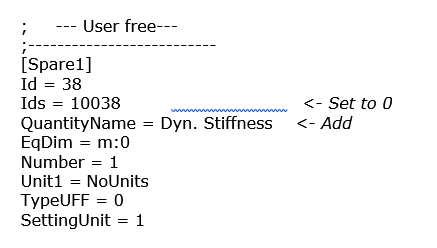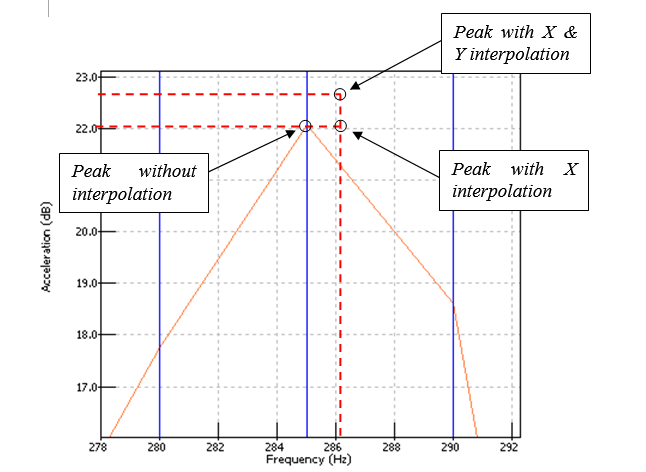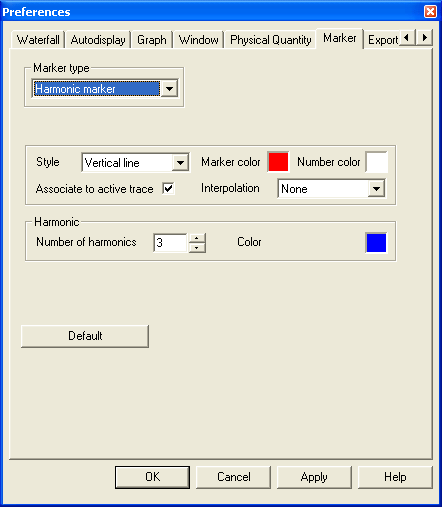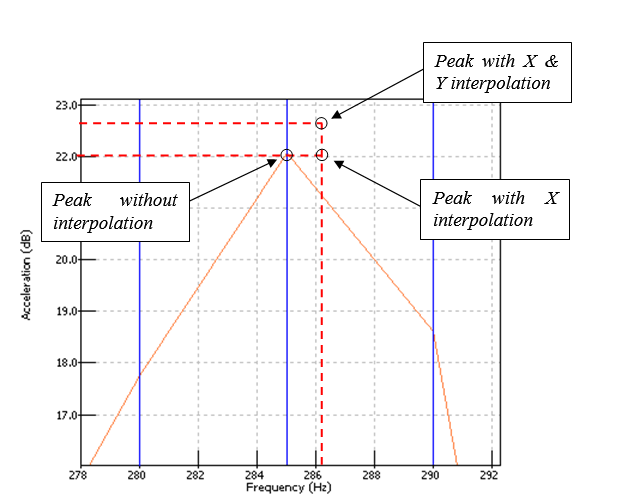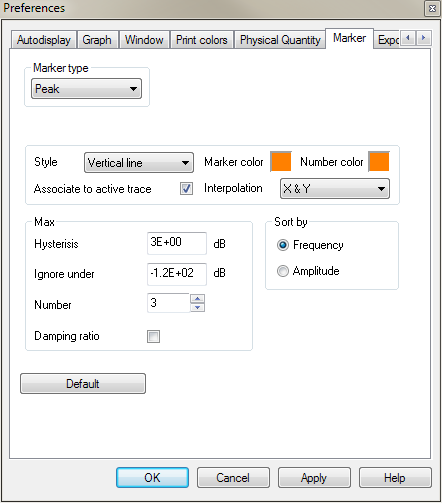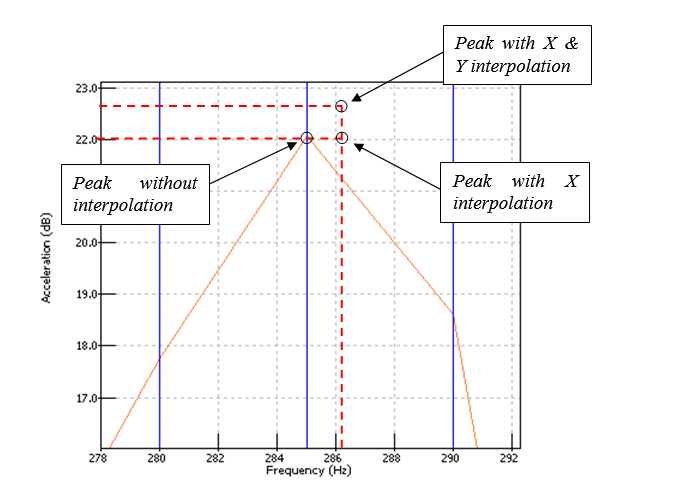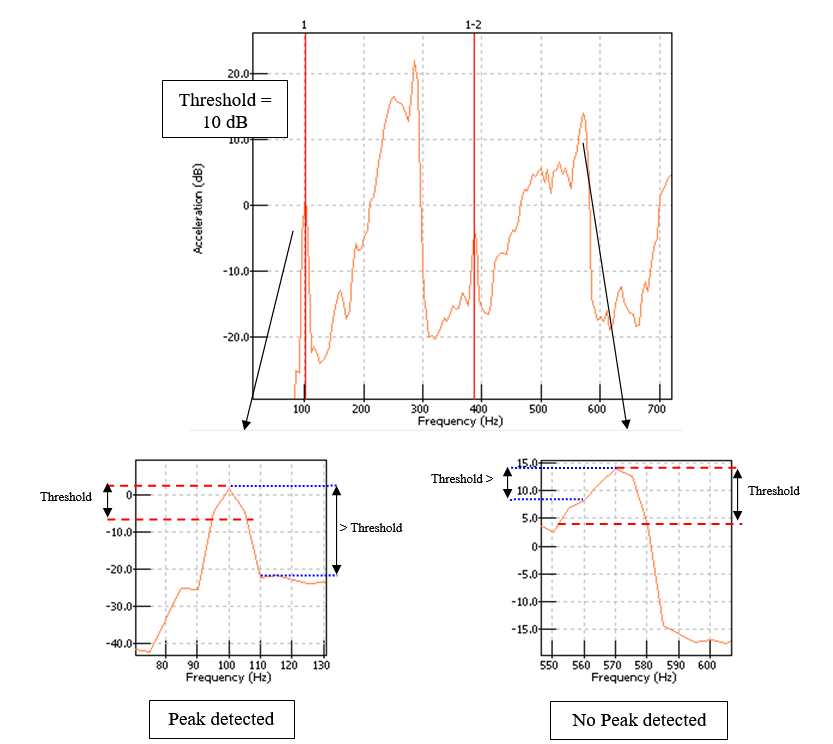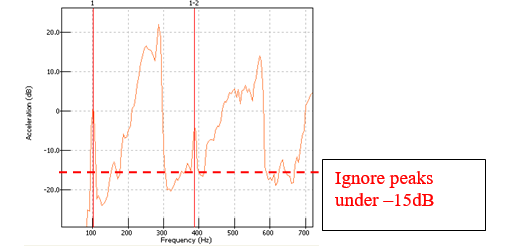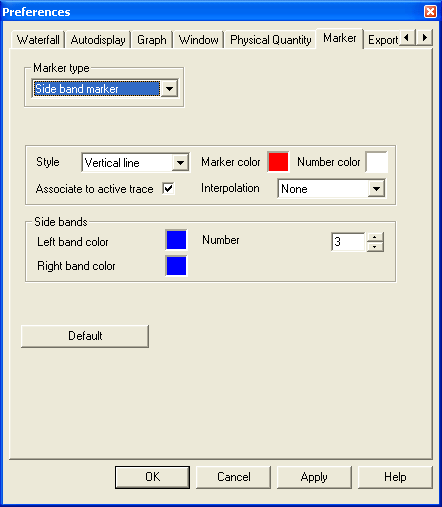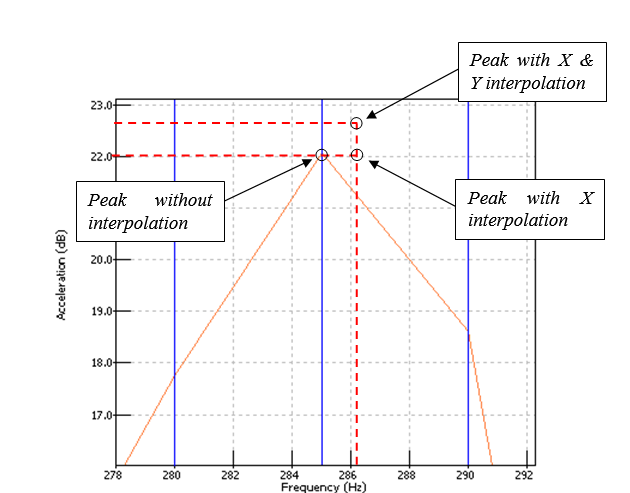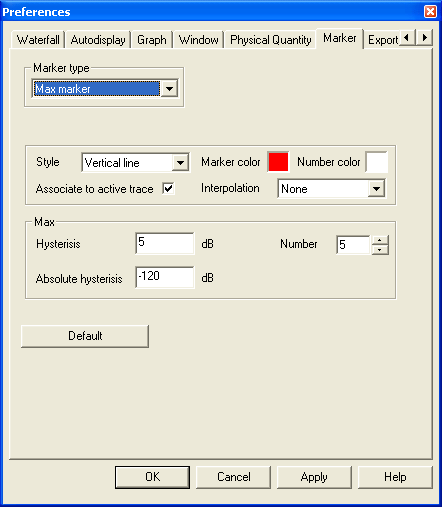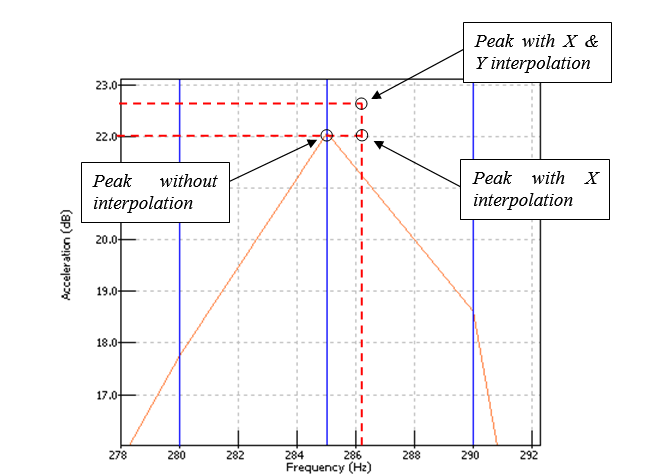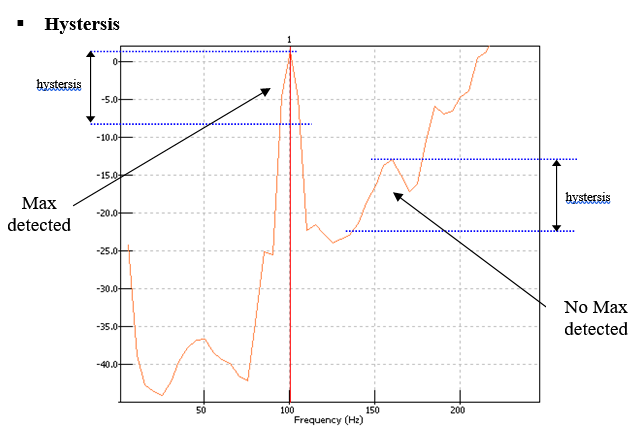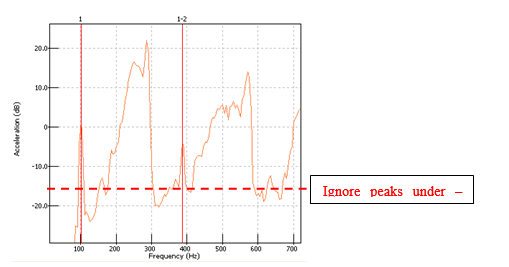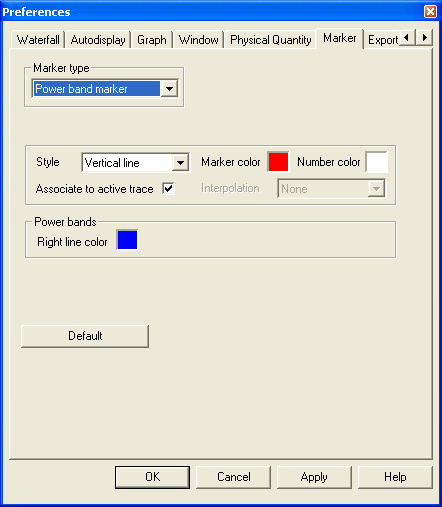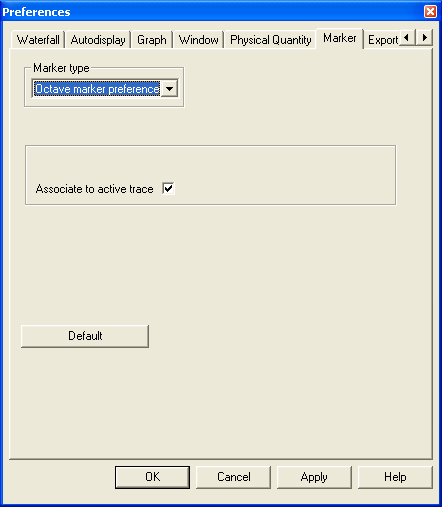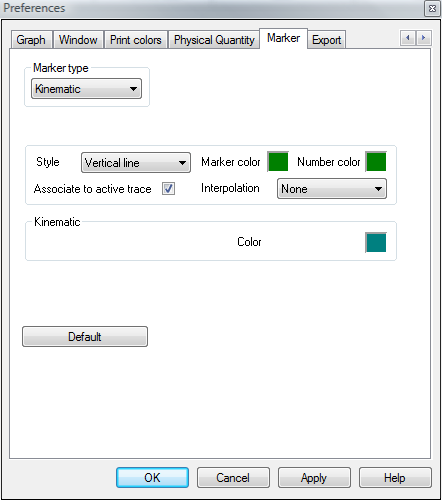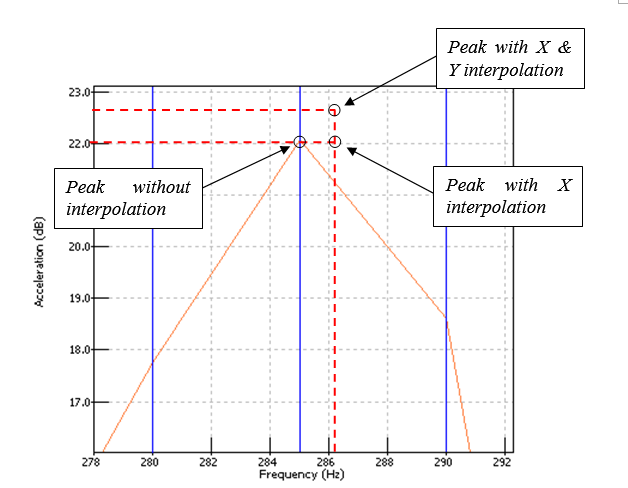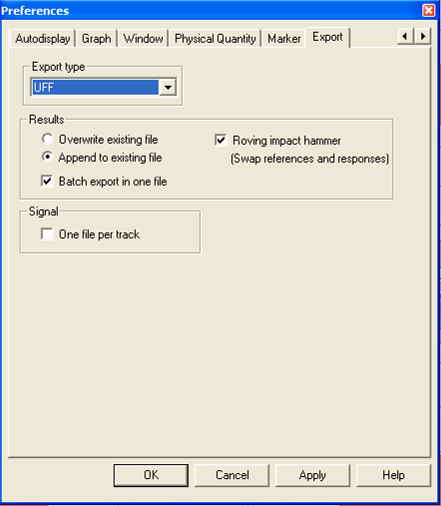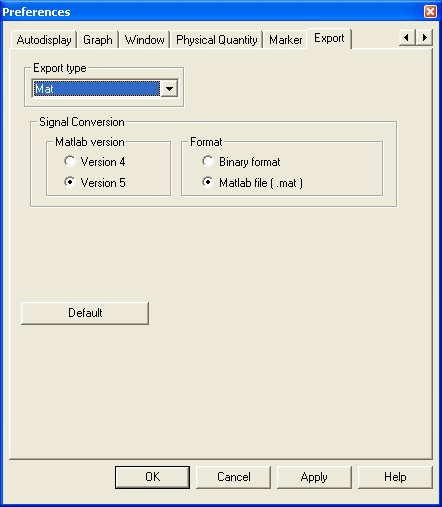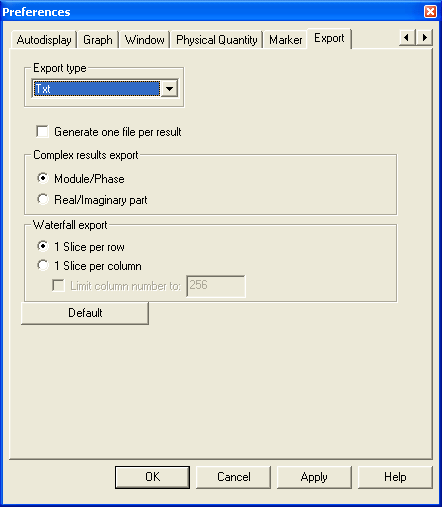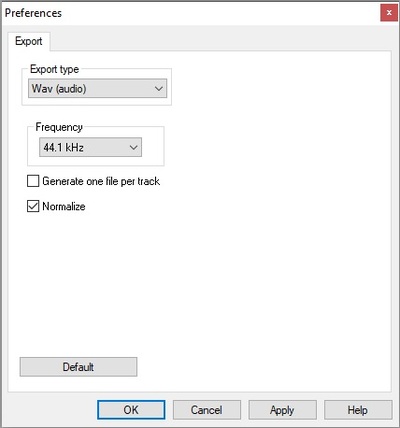Difference between revisions of "NVGate User Preferences"
| Line 1,066: | Line 1,066: | ||
OROS native files containing more than 16 tracks will automatically be exported in single tack wav file (one file per track, despite export preference option being unticked). | OROS native files containing more than 16 tracks will automatically be exported in single tack wav file (one file per track, despite export preference option being unticked). | ||
[[ | [[File:NVGate_Wav_Export.jpg|400px]] | ||
Compatibility table (OROS to Wav): | Compatibility table (OROS to Wav): | ||
| Line 1,117: | Line 1,117: | ||
=====Generate one file per track===== | =====Generate one file per track===== | ||
When a signal file is converted to wav, every track is saved in a separate file if this option is selected. | When a signal file is converted to wav, every track is saved in a separate file if this option is selected. | ||
=====Normalize===== | |||
A WAV audio file is sampled within [-1;1] Y axis values. By default the export is done according full Range peak of the recorded track file to the WAV scale [-1;1]. | |||
If the dynamic of the recorded signal is low regarding the range peak, WAV level could become too low to be playback on speaker. | |||
Activate the "Normalize" option so that the export is done according to true level of the signal to be exported. Min and Max of the signal will be taken into account to generate WAV audio file betweenrange [-1;1] corresponding to [Min;Max]. | |||
ATTENTION : Signal level become no more valid for comparison while using "Normalize" Option. | |||
- With "Normalize" option : [-Range Peak ; Range Peak] --> [-1 ; 1] | |||
- Without "Normalize" option : [Signal Min ; Signal Max] --> [-1 ; 1] | |||
Revision as of 07:52, 25 August 2020
User preferences
Introduction
The user preferences allow modifying and saving your preferred usages for future uses. NVGate propose to share the software use (from a unique PC) between multiple users allowing them to recall their preferences
The user preferences are saved in the user file (.usr).
Users preferences are accessible from the Home tab/ Preferences group
General
This page is dedicated to general NVGate setting.
- Default project: When this option is selected, a new project called "Default project" is created when NVGate is launched.
- Last project: When this option is selected, the last project used is loaded when NVGate is launched.
- Default Model: This command is only available when the option "Start with default project" is selected. When this option is selected, the new project will be empty and all settings take their default values.
- Specific Model: This command is only available when the option "Start with default project" is selected. In this case, the new project is created using a workbook model from the library (using 'Load Model'). Use this option to create a project with some default settings and displays specific to your needs.
- Skip identification: This option bypasses user identification prompt. When selected, the last user is automatically selected. This will not work if the user has a password.
- Play sound: Option to produce a sound when a warning or an error is received.
Note: Your computer must have speakers for this option.
- Windows refresh rate: Used to slow down the window refresh rate. This option should be modified only for heavy configurations or when the host computer has a slow processor.
- Scale: Modifies the graph scale font size.
- Infotrace: Modifies the Infotrace graph font size.
- Change of analyzer setting: When an important setting is modified while the Analyzer is running, a message informs the user that this modification will stop the current analysis.
- Auto-save configuration: Define the periodicity of the current setup automatic saving in minutes. In case of abnormal termination, NVGate will propose to recover the last saved setup. Attention if a large signal file is loaded in the player, a copy of this file will be saved periodically. Thus may lead to short freezes of the software and large disk space use.
- Specialized mode: choose between 'structural' (this mode is dedicated to the acquisition of modal data (through hammer acquisition or signals provided by up to 6 shakers) or 'rotating' (this mode is dedicated to rotating and reciprocating machines).
- date format can be forced to the month/day/year with 2 digits each or matches the regional windows settings. Selecting mm/dd/yy makes date sorting easier.
Select this option to block this message.
For users that selected the date as the measurement name auto increment, a choice of date format
Project manager
This preference page is used to configure the project manager.
Project manager options
- Only my projects: When this option is selected, only the projects that belong to the current user are displayed. This can be useful when NVGate is used by many users.
- All user projects: When this option is selected, the projects that belong to all users are displayed. This can be used to share data or set-ups between different users.
- Sort: The projects can be displayed in three different ways in the project manager:
| Alphabetical | The projects are classified by their name |
| Latest to oldest | The projects are classified by date created, with the newest project being at the top of the project manager |
| Oldest to latest | The projects are classified by date created, with the newest project being at the bottom of the project manager |
Measurements displayed
- All: all measurements are displayed even the measurements that do not belong to the current user.
- Filtered by keyword: the measurement can be filtered by keyword. The keywords are assigned to the measurement when it is created, or can be changed in measurement properties. This option is very helpful when organizing measurement campaigns.
General
It is possible to hide all the inactive workbooks and to delete the measurement level. The table below illustrates the differences
New project
This option sets the default protection that will be applied to a new project. This protection can be modified later via the project properties.
- Read-only to all other users: he current user does not want to allow other users to modify his projects. Other users can load the project, but will not be allowed to modify it.
- No protection: Any user can freely modify the current user's project.
Save
New measurement
- Save option: This option determines the way in which the measurement will be created when the analyzer stops
| Do not save | No measurement will be created. The only way to save the results selected is to perform the Save Result command manually |
| In default measurement | The measurement is created with the name "Default measurement". If a measurement with this name already exists, it is overwritten. |
| With name confirmation | A dialog box will be displayed when the analyzer stops. It will suggest a name using a Base name and an auto increment choice. |
| Without name confirmation | The measurement is created with a name automatically generated from the Base name and the auto increment choice. |
- Default keyword: Used to choose the keyword that will be associated with the new measurement. Refer to the preference section for more information.
- Automatic generation of results layouts: by checking this box, measurement will be saved with the corresponding layout and when this measurement will be open it will be possible to modify the current layout.
Saved Results
- Current Analysis result: Results obtained from an acquisition.
- End of acquisition: open automatically a dialog box to save the results when the analyzer stops.
- Manually: allow to save the results manually.
- Working results: Results obtained after an operation based on already saved results, for example a result calculated with an operator, or the computation of results from an edidted measurement such as FRF H2 from a saved H1. These results can be only saved manually.
Default: set all the parameters to their default values.
Waterfall
This preference page is dedicated to Waterfall window configuration. Settings specific to the type of result can be modified in the graph preference page.
- Display style
Used to select the Waterfall 3D view style. Three display styles are available:
- Line display: in this mode, each spectrum or block is displayed with a filled plane surface defined by the spectrum points. The fill color is the selected color for single color field.
- If Waterfall color is activated, the current palette is used to compute the color of the points and an interpolation is used to display the spectrum. If not, the spectrum is black.
- Point display: in this mode, only points are displayed. There are no links between them. This mode is useful for small computer configurations or for large Waterfalls with many points or a large depth. If the Waterfall color is activated, the current palette is used to compute the point color. If not, the points get the selected signal color.
- Solid display: this is a colored mode: it displays the Waterfall with interpolation between the points of each spectrum and between two consecutive points with the same x value. This mode is the same one used for the color spectrum view.
- Scrolling
Used to select the scrolling direction. Two are available:
- Front to back: the Waterfall is filled from front to back of the displayed box.
- Back to front: the Waterfall is filled from back to front of the displayed box.
- Color palette
Used to select the color mode used for 3D Waterfall displays. Two modes are available:
- Single color: no color interpolation is used for the points. This color is used for filling the plane in Line mode.
- Waterfall color: if checked, the selected palette is used for the color rendering and for the color spectrogram mode. The edit button displays the palette manager dialog box.
Palette manager
This dialog box is used to create and edit color palette.
Palette
Create: Creates a new palette.
Remove: Removes the selected palette.
Color
Add: Adds a key color to the palette.
Remove: Removes the selected key color from the palette.
Up: The selected key color move up from one step, if possible.
Down: The selected key color move down from one step, if possible.
Each color of the palette can be edited by clicking on a colored area. The percentage can also be edited by double-clicking on the text zone of each color.
- Z autoscale
Used to select an autoscale type. Two kinds are available:
- Disable: no autoscale is activated.
- Continuous: when a spectrum is not within the Z scale values, an autoscale is performed with no margin. This mode is not recommended for computers with limited processing power.
- Y autoscale
Used to select an autoscale type. Two kinds are available:
- Disable: no autoscale is activated.
- Continuous: when a spectrum is not within the Y scale values, an autoscale is performed with no margin. This mode is not recommended for computers with limited processing power.
- Cursor slice visibility
Used to choose the default slice visibility. Four choices are available:
- All: the default slices are displayed in all areas.
- Only in 3D: the default slices are Display only in the 3D area.
- Only in 2D: the default slices are Display only in the 2D area.
- No display: the default slices are not displayed in any area.
- Default reference
Used to select your default reference for your waterfall.
Note: If the measurement is loaded, then the waterfall is displayed as the measurement has been done.
If the Waterfall is displayed, then the reference is the one defined in the user preferences.
- View
Used to select a view mode in the Waterfall window: two modes are available:
- 3D View: only the 3D view is displayed in the window.
- All views: 3D view and slices areas are displayed in the window.
- Orientation
- X ratio: this setting displays the ratio between the window and the waterfall X-axis size.
- Y ratio: this setting displays the ratio between the window and the waterfall Y-axis size.
- Magnification: this setting displays the position of the waterfall in the window in term of depth. The waterfall will be far in the window if the cam factor is large.
- View type:
- 3D isometric
If isometric view is checked: you can change the position and dimension of the waterfall around two fixed points (see above).
- 3D perspective:
If Perspective is not checked: there is no fixed point, the waterfall can be moved in the 3D space. This view is an orthonormal view.
- Freq/Time Colormap:
- Time/Freq Colormap:
Autodisplay
This preference page is used to set up the type of result to be automatically displayed after input connections. It is possible to select the "Autodisplay" type of result for each available plug-in analyzer.
The plug-in analyzers available results are the same as in the "Add/Remove window" dialog.
Example of a FFT Averaged spectrum result autodisplay:
Input connection: The type of result selected in the autodisplay preferences is automatically displayed
Graph
This window allows selecting the graph desired and changing the preferences corresponding to it.
Graph type: Used to select the kind of graph desired.
Time
- Graph type: Used to select the kind of graph desired in order to change the preferences.
If Magnitude gathering is active, when the window is in a simple multi trace mode (module, phase, real, imaginary... but not in multi trace module/phase, real/imaginary....), one area is created for each different Y magnitude in the window.
- X-axis: Select the X scale type. Two kinds of X scale are available (depending on the kind of window).
- Linear
- Logarithmic
- Y-axis: Select the Y scale type. Three kinds of Y scale are available (depending on the kind of window).
- Linear
- Logarithmic
- dB
- Display mode: Select the display mode to use for this kind of graph. Several display modes are available for each kind of graph.
- Trace color: Select the color for each trace of the graph. Only 32 traces can be displayed in the same graph.
If Filling mode is active, each trace of the window is filled with a color and has a black border. This option is especially useful for multi-graph modes. - Cascade settings: If mode Cascade is 'On' you can select the depth (the Z-axis) of the 3D Cascade view.
Spectral
- X-axis: Select the X scale type. Two kinds of X scale are available (depending on the kind of window).
- Linear
- Logarithmic
- Y-axis: Select the Y scale type. Three kinds of Y scale are available (depending on the kind of window).
- Linear
- Logarithmic
- dB
- Display mode
- Magnitude: overlays all magnitude traces on a single graph.
- Phase: overlays all phase traces on a single graph.
- Real part: overlays all real parts traces on a single graph.
- Imaginary part: overlays all imaginary part traces on a single graph.
- Magnitude/phase: overlays all magnitude traces on the upper graph and all the phase traces on the lower graph.
- Real/imaginary: overlays all magnitude traces on the upper graph and all the phase traces on the lower graph.
- Polar: overlays all complex traces on a polar graph: þ = magnitude, Ø = phase.
- Real part 3D: displays all real part traces as a 3D graph arranged along the Z-axis.
- Imaginary part 3D: displays all imaginary part traces as a 3D graph arranged along the Z-axis.
- Magnitude 3D: displays all magnitude traces as a 3D graph arranged along the Z-axis.
- Phase 3D: displays all phase traces as a 3D graph arranged along the Z-axis.
- Real part multi-graph: displays all real part traces using one graph per trace in the same window.
- Imaginary part multi-graph: displays all imaginary part traces using one graph per trace in the same window.
- Magnitude multi-graph: displays all magnitude traces using one graph per trace in the same window.
- Phase multi-graph: displays all phase traces using one graph per trace in the same window.
- Phase/Magnitude: overlays all phase traces on the upper graph using 1/3 of window space and all the magnitude traces on the lower graph using 2/3 of the window.
- Merged Magnitude/Phase: displays all magnitude and phase part traces as a unique graph.
- Magnitude gathering: if this mode is activated and when a multi-trace mode is selected, an area is created for each different Y magnitude: all the signals with the same Y magnitude are in the same area. If there is only one different Y magnitude, all the signals are in the same area.
- Trace color
- Number: selects the trace number for color modification.
- Color box: click on this box to modify the color of the selected trace.
- Filling mode: if selected, all the curves of the windows are filled from:
- the bottom of the area if Y scale is a dB one or Logarithmic one
- the 0 value of the Y scale is linear.
- Dynamics
- 90 dB: resizes the Y-axis to 90 dB dynamics starting from +20 dBV.
- 110 dB: resizes the Y-axis to 110 dB dynamics starting from +20 dBV.
- 130 dB: resizes the Y-axis to 130 dB dynamics starting from +20 dBV.
- 150 dB: resizes the Y-axis to 150 dB dynamics starting from +20 dBV.
- Phase
- -180° -> 180°: sets the phase graph Y-axis between –180° to +180°.
- 0 -> 360°: sets the phase graph Y-axis between 0 to +360°.
- Rotations: sets the number of rotations to be displayed on the Y-axis.
Example for 5 rotations
Nth octave
- Y Axis
- Linear: uses linear scale for Y-axis units.
- Logarithmic: uses logarithmic scale for Y-axis units.
- dB: uses reference dB scale for Y axis units.
- Display mode
- Bar: bar representation
- Step: step representation.
- Rectangle: overlaid rectangle
- Filled: overlaid filled rectangles.
- Display mode
- Multi-trace: overlays all traces on a single graph.
- Multi-graph: one graph for each trace.
- Magnitude gathering: if this mode is activated and when a multi-trace mode is selected, an area is created for each different Y magnitude: all the signals with the same Y magnitude are in the same area. If there is only one different Y magnitude, all the signals are in the same area.
- Trace color
- Number: selects the trace number for color modification.
- Color box: click on this box to modify the color of the selected trace.
- Weighting
Used to select the type of weighting desired.
- Overall level
- Linear: if checked, the linear global level is displayed.
- Weighted: if checked and available, the weighted level is displayed.
- Frequencies
- Exact: displays exact band center frequency.
- Preferred: displays preferred frequencies, i.e rounded values for the central frequencies. Preferred frequencies are only available for octave and 1/3rd octave windows: in the octave. If this mode is selected in 12th and 24th octave windows, exact frequencies are displayed.
- Dynamics
- 90 dB: resizes the Y-axis to 90 dB dynamics starting from +20 dBV.
- 110 dB: resizes the Y-axis to 110 dB dynamics starting from +20 dBV.
- 130 dB: resizes the Y-axis to 130 dB dynamics starting from +20 dBV.
- 150 dB: resizes the Y-axis to 150 dB dynamics starting from +20 dBV.
Viewmeter
- Display mode: There are two types of display:
- Bar graph
- Digital display
- Y Axis
- Linear: uses linear scale for Y-axis units.
- Logarithmic: uses logarithmic scale for Y-axis units.
- dB: uses reference dB scale for Y-axis units.
- Display max, Display min: Displays the min and the max scalar value as a cursor. The color of the cursor can be freely selected. This property only applies to bar graphs.
- Display low level: Changes the color of the display when the value is below this level. The color can be freely selected.
- Display high level: Changes the color of the display when the value is higher than this level. The color can be freely selected.
- Display alarm level: Changes the color of the display when the value is higher than this level. The color can be freely selected.
- Brick height: Defines the height of the bricks for the viewmeter and brick display modes.
- Save as user preference: When this box is checked, the value is given as a percentage of the full scale, and may be applied to any graph.
Monitoring
- Trace color
- Number: selects the trace number for color modification.
- Color box: click on this box to modify the color of the selected trace.
- X Axis
- Absolute time: displays the time from windows format.
- Relative time: displays the duration of the record. The beginning of the record is set to 0.
- Auto: selects absolute or relative time depending on the duration of the record. For records smaller than 2s, the relative time is displayed, for others, the absolute time is chosen.
- Y Autoscale
- Continuous: the Y scale is automatically adjusted to the current min and max y values of the window traces with a margin to facilitate visibility.
- Disabled: Y autoscale is not activated.
Compressed signal
- Trace color
- Number: selects the trace number for color modification.
- Color box: click on this box to modify the color of the selected trace.
- X Axis
- Absolute time: displays the time from windows format.
- Relative time: displays the duration of the record. The beginning of the record is set to 0.
- Auto: selects absolute or relative time depending on the duration of the record. For records smaller than 2s, the relative time is displayed, for others, the absolute time is chosen.
Profile
- X Axis
- Linear: uses linear scale for X-axis units.
- Y Axis
- Linear: uses linear scale for Y-axis units.
- Display mode
- Magnitude: overlays all magnitude traces on a single graph.
- Phase: overlays all phase traces on a single graph.
- Magnitude gathering: if this mode is activated and when a multi-trace mode is selected, an area is created for each different Y magnitude: all the signals with the same Y magnitude are in the same area. If there is only one different Y magnitude, all the signals are in the same area.
- Trace color
- Number: selects the trace number for color modification.
- Color box: click on this box to modify the color of the selected trace.
- Filling mode: if selected, all the curves of the windows are filled from:
- the bottom of the area if Y scale is dB or Logarithmic.
- the 0 value if the Y scale is linear.
- X Autoscale
- Continuous: the X scale is automatically adjusted to the current min and max x values of the window traces.
- Disabled: X autoscale is not activated.
- Y Autoscale
- Continuous: the Y scale is automatically adjusted to the current min and max y values of the window traces with a margin to facilitate visibility.
- Disabled: Y autoscale is not activated.
Complex profile
- X Axis
- Linear: uses linear scale for X-axis units.
- Y Axis
- Linear: uses linear scale for Y-axis units.
- Logarithmic: uses logarithmic scale for Y-axis units.
- dB: uses reference dB scale for Y axis units.
- Display mode
- Magnitude: overlays all magnitude traces on a single graph.
- Phase: overlays all phase traces on a single graph.
- Real part: overlays all real part traces on a single graph.
- Imaginary part: overlays all imaginary part traces on a single graph.
- Magnitude/phase: overlays all magnitude traces on the upper graph and all phase traces on the lower graph.
- Real/imaginary: overlays all magnitude traces on the upper graph and all phase traces on the lower graph.
- Polar: displays in polar coordinates, the phase and the amplitude on a single graph.
- Real part multi-graph: displays all real part traces using one graph per trace in the same window.
- Imaginary part multi-graph: displays all imaginary part traces using one graph per trace in the same window.
- Magnitude multi-graph: displays all magnitude traces using one graph per trace in the same window.
- Phase multi-graph: displays all phase traces using one graph per trace in the same window.
- Phase/Magnitude: overlays all phase traces on the upper graph using 1/3 of window space and all the magnitude traces on the lower graph using 2/3 of the window.
- Merged Magnitude/Phase: displays all magnitude and phase parts traces on a single graph.
- Magnitude gathering: if this mode is activated and when a multi-trace mode is selected, an area is created for each different Y magnitude: all the signals with the same Y magnitude are in the same area. If there is only one different Y magnitude, all the signals are in the same area.
- Trace color
- Number: selects the trace number for color modification.
- Color box: click on this box to modify the color of the selected trace.
- Filling mode: if selected, all the curves of the windows are filled from:
- The bottom of the area if Y scale is dB or Logarithmic.
- The 0 value if the Y scale is linear.
- Dynamics
- 90 dB: resizes the Y-axis to 90 dB dynamics starting from +20 dBV.
- 110 dB: resizes the Y-axis to 110 dB dynamics starting from +20 dBV.
- 130 dB: resizes the Y-axis to 130 dB dynamics starting from +20 dBV.
- 150 dB: resizes the Y-axis to 150 dB dynamics starting from +20 dBV.
- Phase
- -180° -> 180°: sets the phase graph Y-axis between –180° to +180°.
- 0 -> 360°: sets the phase graph Y-axis between 0 to +360°.
Rotations: sets the number of rotations to be displayed on the Y-axis.
Example for 5 rotations
- X Autoscale
- Continuous: the X scale is automatically adjusted to the current min and max x values of the window traces.
- Disabled: X autoscale is not activated.
- Y Autoscale
- Continuous: the Y scale is automatically adjusted to the current min and max y values of the window traces with a margin to facilitate visibility.
- Disabled: Y autoscale is not activated.
Coherence
- X Axis
- Linear: uses linear scale for X-axis units.
- Y Axis
- Linear: uses linear scale for Y-axis units.
- Display mode
- Multi-graph: overlays all traces on a single graph.
- Multi-trace: displays all traces using one graph per trace in the same window.
- Time multi-trace 3D: overlays all traces on a single 3D graph.
- Magnitude gathering: if this mode is activated and when a multi-trace mode is selected, an area is created for each different Y magnitude: all the signals with the same Y magnitude are in the same area. If there is only one different Y magnitude, all the signals are in the same area.
- Trace color
- Number: selects the trace number for color modification.
- Color box: click on this box to modify the color of the selected trace.
- Filling mode: if selected, all the curves of the windows are filled from:
- the bottom of the area if Y scale is dB or Logarithmic.
- the 0 value if the Y scale is linear.
Lissajous
- X Axis
- Linear: uses linear scale for X-axis units.
- Y Axis
- Linear: uses linear scale for Y-axis units.
- Trace color
- Number: selects the trace number for color modification.
- Color box: click on this box to modify the color of the selected trace.
Window
- Colors: Selects the different colors used in graphical displays.
Text: scale text color in the graph area
Grid: grid color used in graph area
Grid frame: color used for the graph area frame
Cursor: color for the cursors in the graph areas
Graph background: color used in the graph area background
Window background: color used for the background of graphical display windows
Infotrace background: color used for the infotrace background.
- Cursor style
Style: Selects the cursor style in graphical displays. The available styles are:
- Vertical line
- Vertical dashed line
- Vertical with rectangle
- Cross-hair
- Vertical + Horizontal
Linked: Enables links between the cursors of several windows: when one cursor moves, the other also moves. See cursor menu section for details.
Display values of all traces: if checked, all Y values for each trace will be displayed, not only for the active trace.
- Cursor number: Enables one or two cursors in the graphical display. Each cursor can be moved independently. The information of each cursor will be displayed (if activated) in the infotrace area. With 2 cursors enabled, the x and y difference will be displayed.
- Grid style: Selects the grid style in the graphical area for the scale and the second Y scale if available. The double grid is available when "Merged Module/Phase" display mode is selected from the window properties.
Grid styles available are:
- No grid
- Solid
- Dashed
- Arrangement: Selects the arrangement style used when a new window is created. Arrangements available are:
- No arrangement
- Tile horizontally
- Tile vertically
- Cascade
- Automatic tile
- Highlight active trace
Multi-trace or multi-graph windows are useful with several inputs and multi-analysis operation. This type of graphs features now a way to highlight the active trace. A preference allows activating larger drawing for the active trace (+1 pixel on both sides).
It applies on 2D graphs except the compressed signals view (TDA TimeView, Recorder monitoring, Player signal, zoomed signal and signal preview). Both multi-graphs and multi-trace support this option.
This feature is activated in the default users' preferences. You can de-activate this option from the Home\Preferences\General dialog or the contextual windows properties menu: select the Windows tab and unselect the "Enlarge active trace" option.
Trace legend
Trace identification is necessary and OROS paid attention to provide the maximum of information to identify clearly the results. On the other hand not all the information are necessary depending on the measurement/exploitation context.
NVGate made possible the selection of the viewed and printed data from the infotrace area:
This is accessible from both users' preferences for all new display or locally from the window properties (right click out of the graph) to modify the current window only.
Print colors
This preferences allows setting the way the report or copy/paste out of NVGate are plotted.
2 palettes are available one for B&W printer the other one for colored export.
Note the trace width depends on the printer resolution (dpi). A width of 1 in the screen correspond approximately to a width of 50 on a laser printer
Physical quantity
| This preference page is dedicated to the choice of the units and the | associated options. |
- Physical quantity: Here all quantities that can be managed by NVGate are displayed. This list cannot be modified.
- Unit: Displays the list of available units for the selected quantity. The main information about the unit is displayed just below the list.
- New: Use this button to create a new unit for the selected quantity.
The following dialog box is used to define the units.
Name: Name that will be displayed when the unit is used
Symbol: Symbol that will be used when a value is displayed in this unit
Enable right zero display: If selected, the value will be filled by zero after the decimal
Notation
Fixed: When possible, the value is displayed without any exponent and without a prefix.
Prefixed: Prefix (u, m, k, M) used as exponent preference.
Engineer: Values are displayed with exponents in multiples of 3 ( -9,-6,0,3,6,9,12...)
Scientific: Values are displayed with exponents so that only one figure is used before the decimal
Time: Should only be used to display date and time
The following table shows the effect of the notation on the display of three values: 20000 m/s², 70700 m/s², 0.0002091 m/s²
| Fixed | Prefixed | Scientific | Engineer | |
| Right zero display enabled | 20000 70700 2.091 E-4 |
20.00 k 70.7 k 209.1 u |
2.000 E4 7.07 E4 2.091 E-4 |
20.00 E3 70.7 E3 209.1 E-6 |
| Right zero display disabled | 20000 70700 2.091 E-4 |
20 k 70.7 k 209.1 u |
2 E4 7.07 E4 2.091 E-4 |
20 E3 70.7 E3 209.1 E-6 |
Enable Lin display: Authorizes or not the use of a linear scale when displaying a result with this unit in a graph
Enable Log display: Authorizes or not the use of a logarithmic scale when displaying a result with this unit in a graph
- dB Display
- Enable dB display: Authorizes or not the use of dB scale when displaying a result with this unit in a graph
- dB symbol: This symbol will be added to the value when expressed in dB.
- 0 dB reference: Value used has the dB scale reference.
Example 2 E-5 Pa for Acoustic pressure in Pa
- Conversion: Used to convert linear values to dB values.
Example:
20 for Acoustic pressure in Pa because dB Value = 20*log (Lin_Value/2e-5), but 10 for the unit representing power.
- Prefix: If Automatic is selected, the lowest and highest prefix can be selected from the two lists on the right
If forced is selected, the value is always displayed with the selected prefix
- Conversion equation: Displays the coefficient to use for converting an SI value to a given units.
Example:
Value in_ = 0.101936 * Value in SI + 0 where Value in SI is m/s²
Value in Celsius = 1* Value in Kelvin - 273.15
- Hide view meter decimal digit(s) : This settings is only available for angular velocity. If the settings is selected the visualization of the view meter angular velocity will not have decimal digit.
Modify
Use this button to modify the selected unit. Only units created by the user can be modified. Refer to "New unit" for description of the parameters.
Remove
Use this button to remove the selected unit. Only units created by the user can be removed.
Precision in dB
General option (applied to every unit) to define the number of figures displayed after the decimal when using dB display.
Spare units and physical quantities
NVGate Features 4 "Spare units" to be used when requested physical quantity does not exist in the software. Actually these spare units are physical quantities. It is possible to rename it an choose the associated units
The procedure is as follow
1. Open the file orosunit.ini from the installation directory
2. In the MAGNITUDE DEFINITION section goes to the Spare ones
3. Set corresponding Ids to 0
4. Add a line QuantityName = new name
5. Start NVGate and create associated units
Example to create Dynamic Stifness magnitude:
For using special characters (ex Asian languages) the orosunit.in file must be encoded as UTF-8.
Note that the orosunit.ini file is overwritten at each new install of NVGate.
Marker
Free Marker page
Style
Selects marker drawing style used in graphical area. The available marker drawing styles are:
- Vertical line
- Vertical dashed line
- Vertical with rectangle
- Cross-hair
- Vertical + Horizontal
- Marker color: Selects the marker color used in the graphical area.
- Number color: Selects the marker number color used in the graphical area.
- Associated to active trace: If checked, the marker added will be associated with the active trace: the markers display the values only for the active signal. If not checked, the markers display all the values when not associated with a signal.
- Interpolation: This setting selects the interpolation of values displayed in the marker table.
- None: no interpolation applied.
- X: x interpolation is active.
- X & Y: x and y interpolations are active.
Note: the interpolated values of free markers will be available only if the free marker is placed on a peak. The peak detection criteria are the same as the peak marker adjusted in the User preferences. The marker can be moved by 1/32 step. The x value is computed with the selected weighted window.
Label setup
- Text color: Selects label color.
- Background color: Selects label background color.
- Display current position: displays automatically the coordinates of the selected point.
Line setup
- Display line: If checked, a line between marker and label is displayed
- Line color: Selects line color
- Line style: Selects line style. Available styles are:
- Full line
- Dashed line
For more details on the marker use, see the "Markers" topic from the "Chapter 2: Display".
Harmonic marker page
Style
Selects marker drawing style used in graphical area. The available marker drawing styles are:
- Vertical line
- Vertical dashed line
- Vertical with rectangle
- Cross-hair
- Vertical + Horizontal
- Marker color: Selects the marker color used in the graphical area.
- Number color: Selects the marker number color used in the graphical area.
- Associated to active trace: If checked, the marker added will be associated with the active trace: the markers display the values only for the active signal. If not checked, the markers display all the values when not associated with a signal.
- Interpolation: This setting selects the interpolation of values displayed in the marker table.
- None: no interpolation applied.
- X: x interpolation is active.
- X & Y: x and y interpolations are active.
Note: the interpolated values of harmonic markers will be available only if the harmonic marker is placed on a peak. The peak detection criteria are the same as the peak marker adjusted in the User preferences. The marker can be moved by 1/32 step. The x value is computed with the selected weighted window.
Harmonic
- Number of harmonics: Selects the number of harmonics to find.
- Color: Selects harmonics color.
For more details on the marker use, see the "Markers" topic from the "Chapter 2: Display".
Peak marker page
Style
Selects marker drawing style used in graphical area. The available marker drawing styles are:
- Vertical line
- Vertical dashed line
- Vertical with rectangle
- Cross-hair
- Vertical + Horizontal
- Marker color: Selects the marker color used in the graphical area.
- Number color: Selects the marker number color used in the graphical area.
- Associated to active trace: If checked, the marker added will be associated with the active trace: the markers display the values only for the active signal. If not checked, the markers display all the values when not associated with a signal.
- Interpolation: This setting selects the interpolation of values displayed in the marker table.
- None: no interpolation applied.
- X: x interpolation is active.
- X & Y: x and y interpolations are active.
Max
- Number of peaks: Selects the number of peaks to find.
- Threshold: Defines the threshold used for the detection of peaks.
- Ignore under: Defines the absolute threshold used for the detection of peaks.
Sort by
In the Infotrace the 'Peak Marker Table' can be sort by:
- Frequency: in the marker table, results are displayed from the lowest to the highest frequency.
- Amplitude: in the marker table, results are displayed from the highest to the lowest amplitude.
Find peak algorithm
Finding peaks is only available for the Spectrum and Cross Spectrum traces. It looks for the peaks of the selected trace. It can be applied to the current frozen window or to all frozen windows in the workspace.
A spectrum line is detected as a peak if the two following conditions are met:
- The two adjacent spectrum line levels are lower than the central spectrum line level.
- The two following spectrum line levels are lower than the central spectrum level minus the peak threshold.
The next two pictures show how peaks are detected. The difference between the two figures is that the second peak threshold is greater than the first one and the peak is not detected.
- Threshold: In the example below, the "Threshold" is 10 dB.
- Ignore under: Does not display the detected peak if the peak is under this value. In the example below, the "ignore under" value is –15 dB.
Damping ratio
damping ratio is calculated for each detected peak. The calculation is based on the Half-power-band-width method, where DR is the damping ratio:
The calculation of the damping factor is activated through the marker properties or preferences.
When it is activated an additional column is added in the corresponding marker table.
Warning, using nonhomogeneous weighting windows (i.e.: equivalent noise bandwidths are not the same) on FRF channels leads to incorrect peak interpolation and damping results.
For more details on the marker use, see the "Markers" topic from the "Chapter 2: Display".
Side band marker page
Style
Selects marker drawing style used in graphical area. The available marker drawing styles are:
- Vertical line
- Vertical dashed line
- Vertical with rectangle
- Cross-hair
- Vertical + Horizontal
Marker color
- Number color: Selects the marker color used in the graphical area.
- Associated to active trace: If checked, the marker added will be associated with the active trace: the markers display the values only for the active signal. If not checked, the markers display all the values when not associated with a signal.
- Interpolation: This setting selects the interpolation of values displayed in the marker table.
- None: no interpolation applied.
- X: x interpolation is active.
- X & Y: x and y interpolations are active.
Side bands
- Left band color: Selects left band color
- Right band color: Selects right band color
- Number: Selects number of side bands to compute.
Max marker page
Style
Selects marker drawing style used in graphical area. The available marker drawing styles are:
- Vertical line
- Vertical dashed line
- Vertical with rectangle
- Cross-hair
- Vertical + Horizontal
- Marker color: Selects the marker color used in the graphical area.
- Number color: Selects the marker number color used in the graphical area.
- Associated to active trace: If checked, the marker added will be associated with the active trace: the markers display the values only for the active signal. If not checked, the markers display all the values when not associated with a signal.
- Interpolation: This setting selects the interpolation of values displayed in the marker table.
- None: no interpolation applied.
- X: x interpolation is active.
- X & Y: x and y interpolations are active.
Damping ratio
Damping ratio is calculated for each detected peak. The calculation is based on the Half-power-band-width method, where DR is the damping ratio:
The calculation of the damping factor is activated through the marker properties or preferences.
When it is activated an additional column is added in the corresponding marker table.
Warning, using nonhomogeneous weighting windows (i.e.: equivalent noise bandwidths are not the same) on FRF channels leads to incorrect peak interpolation and damping results.
For more details on the marker use, see the "Markers" topic from the "Chapter 2: Display".
Find max algorithm
Looks for the maximum of the selected trace. It can apply to the current frozen window or to all frozen windows in the workspace A maximum is defined as a local maximum such that the variation in size of spectral density of ray, in relation to other local maximum surrounding it, is greater than a set threshold.
The following diagram shows how the maxima are searched for different maximum threshold values. In the first figure, the maximum threshold allows to find 2 maximum while in the second figure a larger maximum threshold found only one maximum.
- Ignore under: Does not display the detected peak if the peak is under this value. In the example below, the "ignore under" value is –15 dB.
Power band marker page
Style
Selects marker drawing style used in graphical area. The available marker drawing styles are:
- Vertical line
- Vertical dashed line
- Vertical with rectangle
- Cross-hair
- Vertical + Horizontal
- Marker color: Selects the marker color used in the graphical area.
- Number color: Selects the marker number color used in the graphical area.
- Associated to active trace: If checked, the marker added will be associated with the active trace: the markers display the values only for the active signal. If not checked, the markers display all the values when not associated with a signal.
Power bands
- Right line color: Selects right line color.
Octave marker page
- Associated to active trace: If checked, the marker added will be associated with the active trace: the markers display the values only for the active signal. If not checked, the markers display all the values when not associated with a signal.
Kinematic marker page
Selects marker drawing style used in graphical area. The available marker drawing styles are:
- Vertical line
- Vertical dashed line
- Vertical with rectangle
- Cross-hair
- Vertical + Horizontal
- Marker color: Selects the marker color used in the graphical area.
- Number color: Selects the marker number color used in the graphical area.
- Associated to active trace: If checked, the marker added will be associated with the active trace: the markers display the values only for the active signal. If not checked, the markers display all the values when not associated with a signal.
- Interpolation: This setting selects the interpolation of values displayed in the marker table.
- None: no interpolation applied.
- X: x interpolation is active.
- X & Y: x and y interpolations are active.
Note: the interpolated values of harmonic markers will be available only if the harmonic marker is placed on a peak. The peak detection criteria are the same as the peak marker adjusted in the User preferences. The marker can be moved by 1/32 step. The x value is computed with the selected weighted window.
Export
This function is used to configure the way data is converted to a specified format.
UFF
UFF58 time export is ASCII so that resulting export file size may quite large. Time to export UFF58 files may be long according to the ASCII file size being exported.
Note: UFF export format also stores the result physical quantity. Please ensure that the software you will use to load the UFF file is set to the same physical quantity as the imported file.
Results
- Roving impact hammer: This option is used only when converting cross-spectra, FRH, coherence. Depending on the habits, the response and the reference may be different. For instance, to use a UFF converted file in Smart office software, the option must be selected.
- Overwrite existing files: you can overwrite existing files by new results.
- Append to existing files: you can append new results to existing files.
- Batch export in one file: The same features are associated to batch export, allowing the export of multiple acquisitions (from on project or several ones) in one unique file.
Signal
- One file per track: When a signal file is converted to UFF, every track is saved in a separate file if this option is selected.
Mat
Matlab export requires that the PC virtual memory be adjusted to double the size of the native OROS time recording.
For instance for a 500Mb OROS time data record to be converted into Matlab, you may need to adjust the PC virtual memory to 1Gb.
Matlab version
Used to select the matlab version of the created file. Refer to your installed version to find out which version you should select.
Format
- Binary format: The conversion of a signal file generates a matlab file containing the description of the track and one binary file containing the data itself. A procedure for reading the data in matlab has to be written.
- Matlab file (.mat): The conversion of a signal file generates a matlab file containing the description of the track and the data itself. Very large file may be difficult to open in Matlab.
Txt
Generate one file per track
When a result file is converted to txt, every result is exported to a dedicated file.
Complex results export
- Module/Phase: Complex result are in the Module / phase format.
- Real/Imaginary part: Complex results are in Real / Imaginary part format.
Waterfall export
- 1 slice per row: The Waterfall is displayed in the exported file so that each line represents a slice of the Waterfall (a spectrum for instance). If the Waterfall contains 50 slices, and the spectra contain 401 lines, the text file will contain 50 lines and 401 columns.
- 1 slice per column: The Waterfall is displayed in the exported file so that each column represents a slice of the Waterfall (a spectrum for instance). If the Waterfall contains 50 slices, and the spectra contain 401 lines, the text file will contain 401 lines and 50 columns.
- Column limitation: When the one slice per column option is selected, it is possible to specify the maximum number of columns that should be created. If the result contains more slices than this number, it is split. This option should be selected when the file is opened with a spreadsheet editor, because the number of columns in this editor might be limited (256 for Excel).
Wav (audio)
This option only applies to the conversion of signals to audio wav files, not to standard wav files.
Exported wav file sampling frequency depends on OROS native file sampling frequency.
OROS native files containing more than 16 tracks will automatically be exported in single tack wav file (one file per track, despite export preference option being unticked).
Compatibility table (OROS to Wav):
| OROS native file sampling frequency (kS/s) | Wav audio formats (kHz) |
| 102.4 | 44.1, 48, 96 |
| 65.5536 | 44.1, 48, 96 |
| 51.2 | 44.1, 48 |
| 32.768 | 44.1, 48 |
| 25.6 | 44.1, 48 |
| 20.48 | 44.1, 48 |
| 16.384 | 44.1, 48 |
| 12.8 | 44.1, 48 |
| 10.24 | 44.1, 48 |
Frequency
Sets the frequency of the converted file. The frequency can be 44.1 kHz, 48 kHz or 96 kHz. It might not be possible to convert the OROS file to the target frequency. It depends on the recording frequency of the OROS file.
Generate one file per track
When a signal file is converted to wav, every track is saved in a separate file if this option is selected.
Normalize
A WAV audio file is sampled within [-1;1] Y axis values. By default the export is done according full Range peak of the recorded track file to the WAV scale [-1;1]. If the dynamic of the recorded signal is low regarding the range peak, WAV level could become too low to be playback on speaker. Activate the "Normalize" option so that the export is done according to true level of the signal to be exported. Min and Max of the signal will be taken into account to generate WAV audio file betweenrange [-1;1] corresponding to [Min;Max]. ATTENTION : Signal level become no more valid for comparison while using "Normalize" Option.
- With "Normalize" option : [-Range Peak ; Range Peak] --> [-1 ; 1]
- Without "Normalize" option : [Signal Min ; Signal Max] --> [-1 ; 1]
